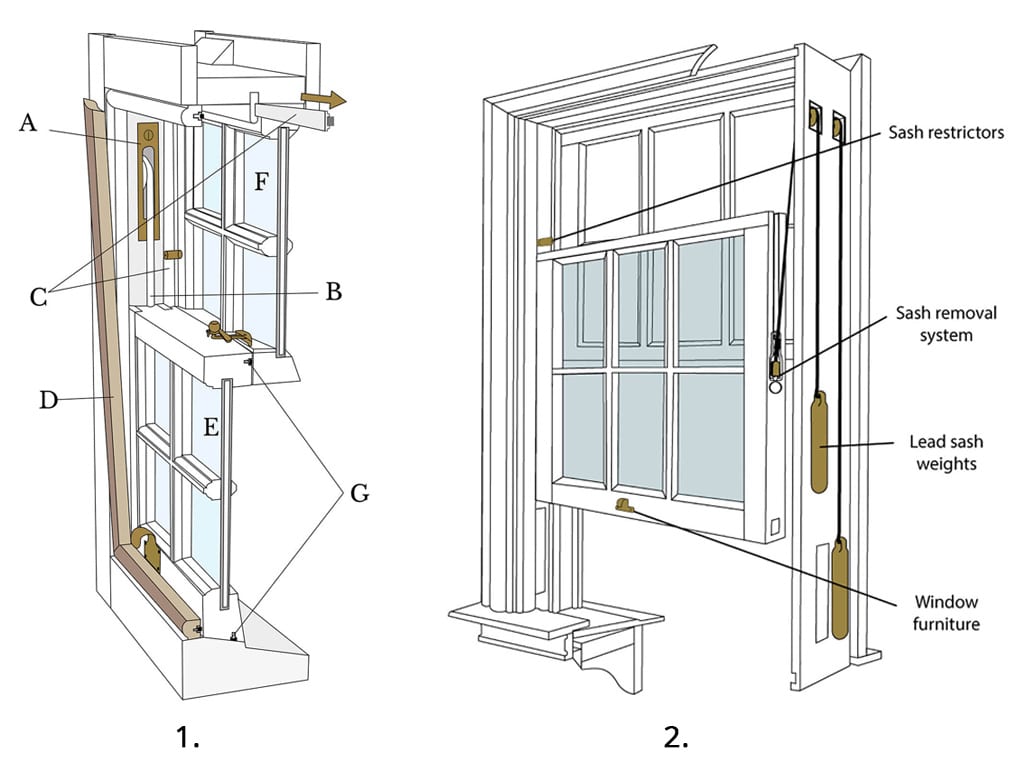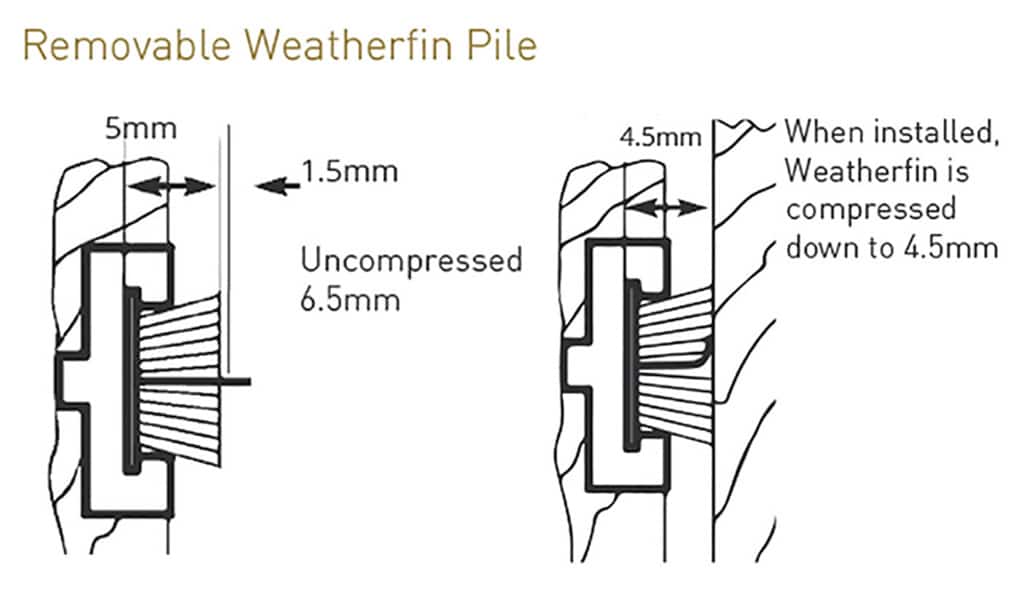Sash Window Anatomy
The anatomy of a sash window
The anatomy of a sash window can be considered a complex thing. Many parts need to work together to make the window operate smoothly.
One of the main problems with the design of the sash window is that they are made with a small 3mm gap around each of the sashes, enabling them to move past one another but subsequently letting in draughts, dust and water, causing rattles on windy days and letting loud noises filter through.
To combat these issues, Ventrolla install their unique Perimeter Sealing System, a draught-proofing system that becomes an integral part of your window, sealing these problematic gaps whilst still allowing for a smooth transition of both sashes.
Sash Window Anatomy Explained
Using the diagram, we’re here to help explain exactly where this draught proofing system sits within your window, as well as clarify other parts that make up the sash window’s anatomy.
A – Pulley – this is the mechanism through which your sash cord is fed and helps the sashes open and close smoothly. Within the sash box are sash.
B – Sash cord – Is attached to the side of each sash, fed through the pulley and attached to a lead sash weight within the sash box (this bit you can’t see until you dismantle the window and open up the sash box). The weights attached to the sash cord counterbalance each sash as it transitions.
C – Parting Bead – You have two parting beads on either side of the sash box, spanning top to bottom between the sashes. Each half section of a Ventrolla parting bead houses our draught proofing system and faces the relevant sash it sits next to, creating a tight weather seal.
D – Staff Bead – This is the detailed trim that frames your sash box internally – it keeps the sashes in place in the sash box. A Ventrolla staff bead is installed on a removable popper system and houses more draught proofing pile.
E – Bottom Sash – This is the bottom moving sash within your sash box. Each sash has a bottom rail and top rail (or ‘mid rail’ on this sash, where the two sashes meet).
F – Top Sash – This is the top moving sash within your sash box. Each sash has a bottom rail (or ‘mid rail’ on this sash, where the two sashes meet) and top rail.
G – Ventrolla Perimeter Sealing System (VPSS) – Our unique draught-proofing system is installed above the top sash (either in the sash itself or in some parting bead facing the top sash, creating the seal), the bottom rail of the top sash (sealing the gap between the two sashes), the bottom rail of the bottom sash (we use a weather-resistant version of our draught proofing here, to withstand the elements), the staff bead (the frame facing the sashes internally and keeping them in place) and the parting bead (which spans top to bottom on each side of the sash box – each half section faces the relevant sash it sits next to, creating a tight weather seal). All these elements put together are effectively draught-proofing the whole sash window perimeter.

Our second diagram shows additional parts, including the ‘hidden’ lead weight in the sash box, window furniture such as sash restrictors (fitted to the side of the sash box, restricting the height the window can be opened to, as a security feature) and sash hooks (fitted to the bottom rail of the bottom sash, providing a handle to lift the sash open with), and our unique Sash Removal System (SRS) which securely fixes the sash cord to the side of your sashes, ensuring they won’t break resulting in you losing the weight in the sash box.

The 3rd diagram shows a close up of our VPSS draught proofing pile – or ‘weatherfin’. We have a range of sizes to suit all gaps, and the correct size is assessed by our Installers on site. A groove is then routed out in the relevant places and the detachable weatherfin pile is fed in to form part of the window. This pile then compresses to form the weather tight seal, but still allows for movement of the sashes.
All pile sections can be removed when you need to paint your window (subject to the SRS being fitted).
To arrange a free, no obligation visit from one of our expert Surveyors, including a live demonstration sash window showcasing the above products, call or click on 0800 0277 454 or contact us here.
